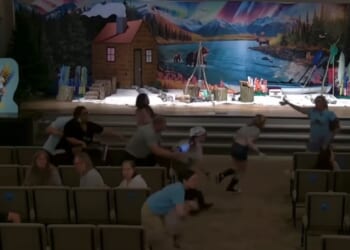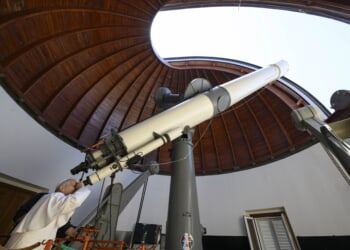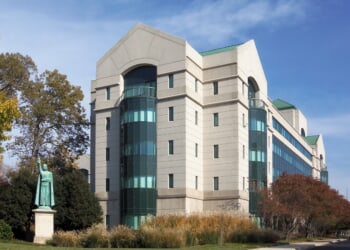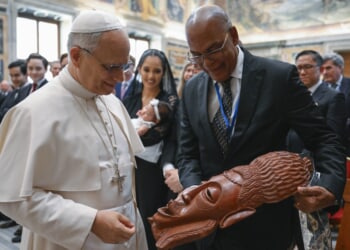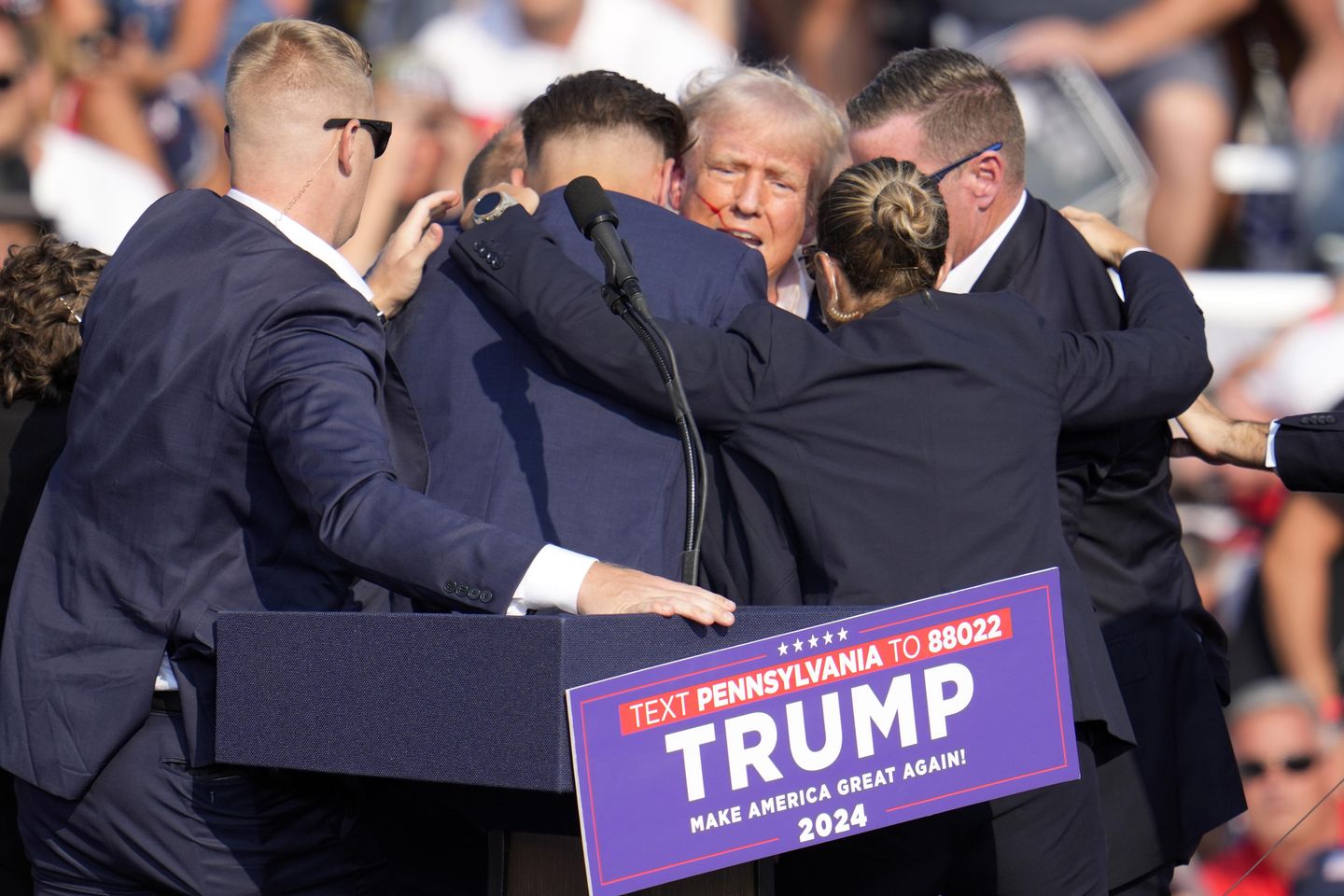
Sunday marks the one-year anniversary of the July 13 assassination attempt on President Trump, but the public and lawmakers who investigated the shooting in Butler, Pennsylvania, are still searching for answers about the gunman and his motive.
The FBI never determined why shooter Thomas Matthew Crooks wanted to kill Mr. Trump, who at the time was a former president running for a second term.
The bureau has not publicly shared information on its investigation in more than 10 months. Congress has also struggled to get details from the federal law enforcement agency.
“It’s a year now, and the American people don’t have answers,” Sen. Ron Johnson, one of the lawmakers investigating the assassination attempt, told The Washington Times. “Who is this Crooks guy?”
Little is known about Crooks, who was killed by a Secret Service countersniper after he fired eight rounds at Mr. Trump. The assassination attempt failed because Mr. Trump suddenly turned his head as the shooter fired; the bullet grazed Mr. Trump’s ear instead.
Other bullets fired in Mr. Trump’s direction hit his supporters. Corey Comperatore, a firefighter, was killed and two other rallygoers, David Dutch and James Copenhaver, were seriously injured.
SEE ALSO: Secret Service suspended six agents without pay after first Trump assassination attempt
That there is still no clarity around Crooks’ motive is “bizarre,” Mr. Johnson said.
The chairman of the Senate Permanent Subcommittee on Investigations, or PSI, an oversight panel under the Homeland Security and Governmental Affairs Committee, said he is trying to get answers to that question and others as he continues to investigate what happened in Butler.
“We’re cranking this up,” Mr. Johnson said. “I’ve not been happy with the slow response we’ve gotten to our requests for information. There’s still many unanswered questions here.”
As part of that ramp-up, Mr. Johnson issued a subpoena a couple weeks ago to the Pennsylvania State Police for their witness interviews and body camera footage.
On Wednesday night, he approved subpoenas for the FBI and the agency’s overseer, the Department of Justice. Those subpoenas cover various outstanding requests for information, including the FBI’s ballistics reports from the shooting and transcripts of interviews with witnesses and people who knew Crooks.
“There is bodycam video footage that’s not being provided to us or the public. I’ve seen some we’re not ready to release that nobody else has seen,” Mr. Johnson said. “There’s definitely information that we need to assemble, and the public does deserve to see.”
As to the need for the subpoenas when Mr. Trump, the subject of the assassination attempt, and his allies are now in charge of the FBI and DOJ, Mr. Johnson blamed it on “partisan actors” who don’t want to cooperate with their new leaders “who are dedicated to radical transparency.”
He said he will formally issue the subpoenas after the three other leaders of the Homeland Security and PSI panels decide whether to sign on.
Senate Homeland Security Chairman Rand Paul, Kentucky Republican, said he supports Mr. Johnson’s effort to try to get more information but he’s not sure there is anything to be found about Crooks’ motive.
“They want to find something that he talked about,” Mr. Paul said, referring to Crooks’ planning of the assassination. “I don’t think anybody’s found that. The FBI has told us they’ve never found anything about it.”
The Washington Times reached out to the FBI for comment.
The bureau has not released any public information on the investigation since last Aug. 28, when FBI officials said the agency had gathered “valuable insight into [Crooks’] mindset, but not a definitive motive.”
While Mr. Johnson is using his role as chairman of PSI to continue to investigate Crooks and what happened in Butler, Mr. Paul is planning to issue a final report on the Secret Service’s inability to thwart the assassination attempt and changes needed to prevent future tragedies.
The committee issued an interim report in September that found a series of Secret Service failures related to the planning and execution of security operations for the July 13 rally “directly contributed” to the attempt on Mr. Trump’s life.
The panel did not conclude its bipartisan investigation last Congress before control of the Senate and the committee switched from Democrat to Republican.
Mr. Paul, who is now in charge, said his goal has been to release a final report by the one-year anniversary of the Butler shooting and he still hopes to do so.
He said the panel “had difficulty getting cooperation” from the Secret Service and had subpoenaed the protective agency for information about disciplinary action taken post-Bulter.
The Secret Service announced on Wednesday that it had suspended six employees without pay, with the suspensions ranging from 10 to 42 days. The agency did not name the employees or their positions but said the six individuals do not hold the same responsibilities as before Butler, as they were placed on restricted duty or moved into nonoperational positions.
Mr. Paul credits his subpoena for pushing the Secret Service to announce the disciplinary action and said the long-sought information will help bring his committee’s investigation to a close.
He acknowledged that Mr. Johnson and Sens. Gary Peters of Michigan and Richard Blumenthal of Connecticut, the top Democrats on the full committee and PSI, may not sign off on his final report as they seek more information.
But Mr. Paul said the investigation “has gone on too long.”
“We’ve essentially got the conclusions,” he said. “Big mistakes were made. It shouldn’t have happened. The president almost died. And reforms had to take place. We think most of those have taken place.”
The Times reached out to Mr. Peters’ and Mr. Blumenthal’s offices for comment.
The House had a separate bipartisan task force that investigated the Butler assassination attempt and issued its final report in December.
In addition to the disciplinary action the Secret Service announced Wednesday, the agency said it has implemented 21 of the 46 recommendations that congressional oversight panels made on how to prevent future incidents. They include updating protective operations policies to ensure clear lines of accountability, modifying the process for determining what security assets are deployed for different events and improving information-sharing with local law enforcement partners.
The Secret Service has also created a new division dedicated to maintaining critical aerial monitoring capabilities. In Butler, the counterdrone system initially failed and was not operational when Crooks flew a drone over the site in the hours before the rally.
Regarding the other congressional recommendations, the Secret Service said it is in the process of implementing the remaining 16 that apply to the agency; the other nine relate to outside stakeholders.
Secret Service Director Sean Curran said his experience on July 13 — when he was working on Mr. Trump’s protective detail — has been top of mind as he overhauls the agency to ensure the Butler failures are never repeated.
“Nothing is more important to the Secret Service than the safety and security of our protectees,” he said. “As director, I am committed to ensuring our agency is fully equipped, resourced, and aligned to carry out our important mission each and every day.”




![Steak ’n Shake Mocks Cracker Barrel Over Identity-Erasing Rebrand [WATCH]](https://www.right2024.com/wp-content/uploads/2025/08/Steak-n-Shake-Mocks-Cracker-Barrel-Over-Identity-Erasing-Rebrand-WATCH-350x250.jpg)

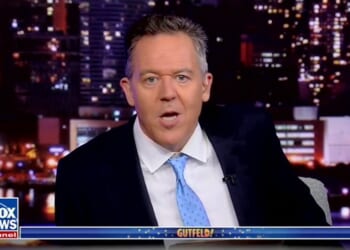

![Soros Network, Others Behind LA Riots [WATCH]](https://www.right2024.com/wp-content/uploads/2025/06/Soros-Network-Others-Behind-LA-Riots-WATCH-350x250.jpg)
![Human Trafficking Expert Details Horrific Biden Admin Endangerment of Migrant Kids [WATCH]](https://www.right2024.com/wp-content/uploads/2025/07/Human-Trafficking-Expert-Details-Horrific-Biden-Admin-Endangerment-of-Migrant-350x250.jpg)


